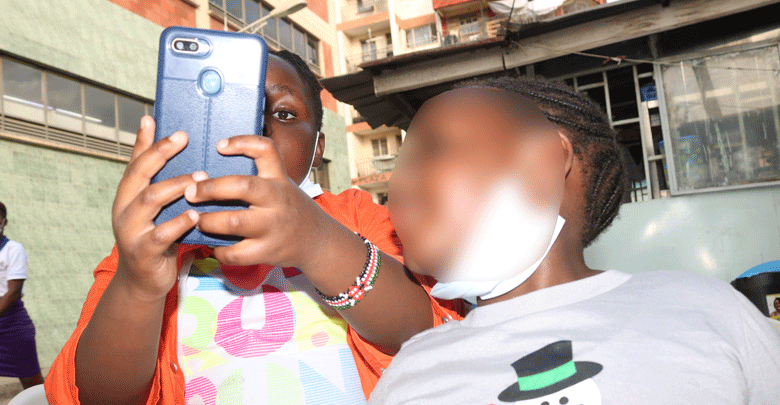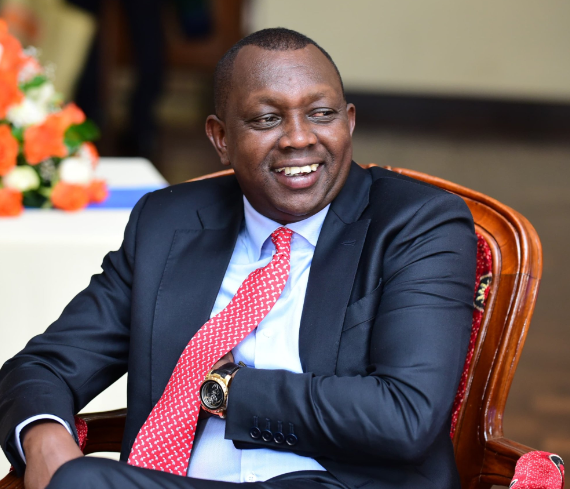How human traffickers use technology to entrap minors

Harriet James @harriet86jim
While we all celebrate the positive side of the internet, it has a dark side which includes human trafficking.
International Labour Organisation statistics indicate that 4.8 million people globally have become victims of forced sexual exploitation, out of which 21 per cent are children. And the internet is to blame for the boom.
The internet has transformed the face of advertising and recruitment, resulting in new forms of exploitation such as webcam sex.
Criminals use money, drugs, sex, lies and threats to coerce their victims to sell themselves. Others entice the victims with promises of jobs.
George Matheka, a programmes manager at Human Trafficking Trust, says social media has made it easy for traffickers to lure children.
“They use the right poetry on the profile photo to entice the young ones, who think they are interacting with a fellow child. At the end of the day, the child ends up in the jaws of a trafficker,” he says.
Once they start chatting, Matheka says, the child is promised gifts and is warned not to share any information with parents or any other adult.
“They take advantage of their innocence to lure them and later agree on a particular date and venue to meet. Then the child disappears,” he continues.
Through baseline survey Matheka notes that child kidnappings increase whenever we approach elections in East African countries.
“The child trafficking is always high due to kafara (black magic). There is a lot of organ harvesting for witchcraft. This is common in Africa,” he says.
The most affected cities are Nairobi, Kisumu and Mombasa.
“There are a myriad of contributors to the rise of cases of child and human trafficking like peer influence, social isolation, parental conflict, history of physical abuse, depression, bullying, poverty, urbanisation and family disintegration,” explains Awilo Nyamolo, Communications Specialist at ChildFund.
“The children are trafficked for domestic servitude, forced labour, begging, marriage and sexual exploitation,” she adds
Unfortunately, child trafficking market in Africa has become so refined, making it difficult for authorities to keep up.
Research by Awareness Against Human Trafficking shows that at best, only two per cent of trafficked children make it back home.
The proliferation of social media and online resources such as open and classified adverts, adult websites and chat rooms has made it easy for traffickers to interact with a large number of potential victims. Traffickers also use the internet technology to advertise their services.
The United Nations Office on Drugs and Crime’s (UNODC) 2020 Global Report on Trafficking in Persons acknowledges the role of technology in fuelling human trafficking.
“Victims are recruited through social media, with traffickers taking advantage of publicly available personal information and the anonymity of online spaces to contact victims.
Patterns of exploitation have been transformed by digital platforms, as webcams and livestreams have created new forms of exploitation and reduced the need for transportation and transfer of victims,” the report says, adding that while traffickers reach out to children using social media, they ‘court’ adults using free-standing websites such as escort sites.
Video performances
The UNODC has also highlighted new ways technology has blurred operational lines when it comes to trafficking.
Among them is through cyber flows, which allow them to overcome geographical boundaries to connect to victims or consumers of exploitative services.
“The cyber flows are often characterised by victims held and coerced into video performances, allowing the perpetrators to connect with potential clients living abroad,” reads the report.
In other cases, traffickers maintain the trafficking within national boundaries. However, they use the internet for recruitment but implement the trafficking offline.
For international flows, a network of perpetrators is needed with members in the source and destination country.
This way, a perpetrator recruits a victim in one country, and a perpetrator in another country enforces the exploitation of the victims.
Community initiatives
Traffickers have also adopted different approaches on how they use the internet including hunting strategies, where they proactively access victims and establish connections with potential buyers.
“In this approach, the targets of the traffickers are not random, but are chosen based on specific characteristics, such as economic, emotional or other vulnerabilities, which consequently make them more susceptible to exploitation or abuse,” it adds.
The other strategy is fishing, where traffickers post advertisements online and wait for potential clients or victims to respond.
ChildFund has a project dubbed the Tuchanuke Project which aims at reducing sex trafficking of children and youth through strengthening system capacity in online child protection, which is an emerging issue in Kenyan urban areas.
The project is funded by Google Kenya through the African online safety to the tune and seeks to develop child safe content that stimulates learning while minimising internet related crimes targeted at children and young people.
The project will take place in Starehe, Kasarani, Kiambu Central and Kikuyu sub-counties.
“We are committed in tackling this enormous issue of online exploitation of children through joint efforts of government, civil society, the media and private sector,” said Alice Anukur, the ChildFund Country director.














